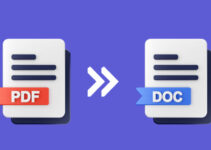Let’s cut to the chase, folks. The age of passively consuming technology is as outdated as a flip phone. We’re living in an era where creativity and technology are intertwined like never before. Once a mere vessel for information, the computer has evolved into an artist’s canvas, a scientist’s laboratory, and a child’s playground.
It’s high time we recognize that coding education isn’t just a “nice-to-have”; it’s a downright necessity. We need to equip the next generation with the tools to not just navigate but to shape the technological landscape. And guess what? The world is catching on.
From Tokyo to Toronto, coding is becoming as fundamental in education as reading, writing, and arithmetic.

The Art of Thinking: Computational Style
Now, let’s talk about computational thinking. Jeannette M. Wing, a veritable rock star in computer science, defines it as the mental gymnastics involved in framing a problem so that it can be solved computationally. And here’s the kicker: it’s not just about programming. Computational thinking is a Swiss Army knife of problem-solving skills.
- Abstraction: Think of it as creating a skeleton of an idea that you can flesh out later. It’s like having a basic recipe you can tweak depending on your mood or dietary restrictions.
- Algorithms: These step-by-step instructions get you from A to B. It’s like a bedtime routine for a kid. You can switch it up, but there’s generally a sequence you follow to avoid tantrums and ensure a peaceful night.
- Decomposition: This is all about breaking down a big, scary problem into bite-sized pieces. Planning a party? Don’t try to tackle it all at once. Break it down: theme, guest list, venue, food, etc.
- Design Thinking: This is where your inner detective meets your inner artist. It’s about asking the right questions to create something truly valuable and user-friendly.
- Pattern Matching: This is about spotting similarities and categorizing them in the coding world. It’s like using filters in online shopping to zero in on the perfect product.
These skills aren’t just for the tech whizzes; they’re life skills, people!
A Global Movement: Coding in K-12 Curriculum
Countries around the globe are waking up to the immense value of integrating coding education from Kindergarten through Grade 12. This isn’t just about churning out an army of programmers; it’s about equipping young minds with the skills to thrive in an increasingly digital world.
Take Japan, for example. They saw the writing on the wall – a potential shortage of 590,000 tech workers by 2030 – and they took action. As of April 2020, coding is mandatory for fifth graders, and they’re not stopping there. High schoolers, you’re next!

And let’s talk about the transformative power of coding education. A study from Brigham Young University found that students who might not be academic all-stars in traditional subjects were blossoming into coding prodigies. We’re talking about kids who were learning, teaching their teachers, and taking pride in their work. Coding was turning these students into problem-solving ninjas.
Coding Education: The Launchpad for 21st Century Careers
Canada is not sleeping on this, either. Ontario is leading the charge by introducing coding into its new math curriculum. And for the educators breaking into a cold sweat at the thought of adding one more thing to their plate, take a deep breath. There are many resources and online coding platforms to ease the transition. Teachers, consider yourselves the bridge between students and the world of technology. Embrace it, and watch as engagement and enthusiasm skyrocket.
And let’s not forget the wise words of the late great Stephen Hawking: “Whether you want to uncover the secrets of the universe, or you just want to pursue a career in the 21st century, basic computer programming is an essential skill to learn.”
Now, if you’re an educator or a parent looking to gift the magic of coding to a child, check out CodeMonkey. It’s an incredible resource that makes learning to code an adventure. Trust me; it’s the kind of gift that keeps on giving.
Final Thoughts: The Time is Now
So, what’s the bottom line? We’re in the midst of a technological renaissance. The lines between technology and daily life are not just blurring but vanishing. Coding isn’t just a skill; it’s a language. It’s a way of interacting with the world. And it’s not just for the Mark Zuckerberg and Elon Musk of the world. It’s for everyone.
We have an opportunity – no, a responsibility – to ensure that the next generation can speak this language and write poetry with it. Let’s ensure that nobody is left behind as the world moves forward.
Let’s get coding, people!






